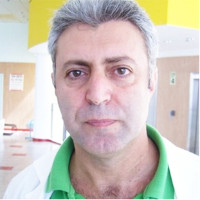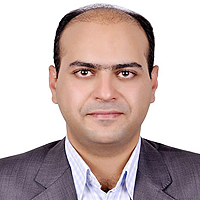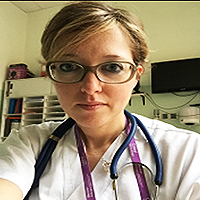Extremely large hemangioma of the liver: Safety of the expectant management
Published on: 6th September, 2019
OCLC Number/Unique Identifier: 8257068015
Hemangiomas are known as congenital vascular malformations that can affect almost any organ or tissue, with the liver being the most common intra-abdominal organ to be involved. It is well known that hemangiomas are the most common benign tumours of the liver, and develop in about 4-20% of people, mainly young adult females. Recently, due to the dramatic rise in the use of imaging studies for different purposes, a parallel increase in the incidence of these tumours has been noticed. Most liver hemangiomas are small (less than 4cm in diameter), asymptomatic and found incidentally during abdominal operation for other indication or on radiologic studies. Giant liver hemangioma is defined as hemangioma with a diameter of more than 5cm. This unique and uncommon type of haemangioma usually poses therapeutic challenges for the treating physician, especially hepatic surgeons, due to the unclear natural history, and due to the risk of life threatening complications is yet to be established. While it is already proved by several studies that conservative management of giant hepatic hemangioma is safe, it is not known whether observation of the extremely large hepatic hemangioma (tumours larger than 10cm) is safe as well.
The aim of this article is to review the English literature to find out if conservative management of the extremely giant liver hemangioma is safe and can be recommended.
Recent advances in pathophysiology and management of subglottic Hemangioma
Published on: 4th May, 2018
OCLC Number/Unique Identifier: 7814923433
Subglottic hemangioma is the most common vascular tumor of the larynx of pediatrics; in contrast, it is relatively uncommon, accounting for an estimated 1.5% of congenital laryngeal anomalies [1].
Rapidly involuting congenital hemangioma associated with Kasabach-Merritt Syndrome
Published on: 17th May, 2021
OCLC Number/Unique Identifier: 9272395700
Background: Rapidly involuting congenital hemangioma (RICH) is a rare vascular tumor that is present at birth and involutes during the first year of life. Kasabach-Merritt syndrome (KMS) is a complication of some vascular tumors such as kaposiform hemangioendothelioma and tufted angioma associated with thrombocytopenia and coagulopathy.
Results: The case of a 2-month-old infant with a diagnosis of RICH with thrombocytopenia and coagulation disorder, successfully treated with surgical excision without complications or recurrence is presented.
Conclusion: The association between RICH and KMS is rare. Histopathological study, immunohistochemistry and ultrasound findings are important for the diagnosis.
Brief summary: This report covers the rare association between rapidly involuting congenital hemangioma and Kasabach-Merritt syndrome in a 2-months-old female infant.
Periocular capillary hemangioma treated with low dose oral propranolol - presentation and outcome of 30 patients
Published on: 31st December, 2021
OCLC Number/Unique Identifier: 9382537723
Purpose: To evaluate the presentation and outcome of periocular capillary hemangioma treated with low-dose oral propranolol.Method: Thirty cases of periocular capillary hemangioma prospectively studied from 1st June 2015 to 31st May 2017 who received oral propranolol on an outpatient basis. Hemangioma causing any threat to vision or disfigurement was included and age below 3 months and multiple lesions were excluded. Starting dose of propranolol was 1 mg/kg and increased to 2 mg/kg after 2 weeks as a maintenance dose. The tapering dose was 1 mg/kg of body weight before discontinuing the medication. Treatment was continued till the child is 1 year of age or no further change in color or size of the lesion in two successive follow-ups. Results: Presenting age was 6.36 ± 3.36 months (ranged 3–24 months) with female predominance (70%). In 86.6% of cases, the vision was Central Steady and Maintained and cycloplegic refraction showed marked astigmatism in 3 children which resolved after treatment. Forty-six percent of children showed color change as an initial response to treatment. Most children (33.3%) responded completely within 5 months after starting the treatment. One third patients (33.3%) showed 100% resolution, 50% showed 90% to 70% resolution. Pretreatment and post-treatment lesion size was1.60 ± 0.86 cm2 and 0.30 ± 0.40 cm2 respectively (p - value < 0.0005). None showed any significant adverse effect of oral propranolol.Conclusion: Low-dose oral propranolol is an effective and cost-effective treatment modality for periocular capillary hemangioma and is safe as an outpatient basis.
Contrast-enhanced Susceptibility Weighted Imaging (CE-SWI) for the Characterization of Musculoskeletal Oncologic Pathology: A Pictorial Essay on the Initial Five-year Experience at a Cancer Institution
Published on: 2nd April, 2024
Susceptibility-weighted imaging (SWI) is based on a 3D high-spatial-resolution, velocity-corrected gradient-echo MRI sequence that uses magnitude and filtered-phase information to create images. It SWI uses tissue magnetic susceptibility differences to generate signal contrast that may arise from paramagnetic (hemosiderin), diamagnetic (minerals and calcifications) and ferromagnetic (metal) molecules. Distinguishing between calcification and blood products is possible through the filtered phase images, helping to visualize osteoblastic and osteolytic bone metastases or demonstrating calcifications and osteoid production in liposarcoma and osteosarcoma. When acquired in combination with the injection of an exogenous contrast agent, contrast-enhanced SWI (CE-SWI) can simultaneously detect the T2* susceptibility effect, T2 signal difference, contrast-induced T1 shortening, and out-of-phase fat and water chemical shift effect. Bone and soft tissue lesion SWI features have been described, including giant cell tumors in bone and synovial sarcomas in soft tissues. We expand on the appearance of benign soft-tissue lesions such as hemangioma, neurofibroma, pigmented villonodular synovitis, abscess, and hematoma. Most myxoid sarcomas demonstrate absent or just low-grade intra-tumoral hemorrhage at the baseline. CE-SWI shows superior differentiation between mature fibrotic T2* dark components and active enhancing T1 shortening components in desmoid fibromatosis. SWI has gained popularity in oncologic MSK imaging because of its sensitivity for displaying hemorrhage in soft tissue lesions, thereby helping to differentiate benign versus malignant soft tissue tumors. The ability to show the viable, enhancing portions of a soft tissue sarcoma separately from hemorrhagic/necrotic components also suggests its utility as a biomarker of tumor treatment response. It is essential to understand and appreciate the differences between spontaneous hemorrhage patterns in high-grade sarcomas and those occurring in the therapy-induced necrosis process in responding tumors. Ring-like hemosiderin SWI pattern is observed in successfully treated sarcomas. CE-SWI also demonstrates early promising results in separating the T2* blooming of healthy iron-loaded bone marrow from the T1-shortened enhancement in bone marrow that is displaced by the tumor.SWI and CE-SWI in MSK oncology learning objectives: SWI and CE-SWI can be used to identify calcifications on MRI.Certain SWI and CE-SWI patterns can correlate with tumor histologic type.CE-SWI can discriminate mature from immature components of desmoid tumors.CE-SWI patterns can help to assess treatment response in soft tissue sarcomas.Understanding CE-SWI patterns in post-surgical changes can also be useful in discriminating between residual and recurrent tumors with overlapping imaging features.
















